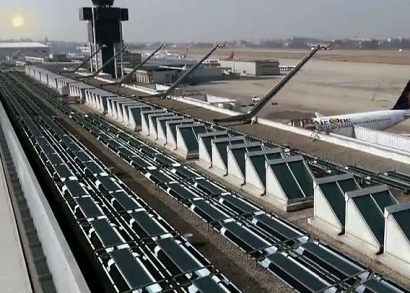
The report, Aviation Climate Solutions, was released by the Air Transport Action Group, a global coalition of aviation partners promoting the sector’s sustainable development.
“The case studies show the wide variety of climate action across the sector. Carbon emissions reduction projects by over 400 organisations in 65 countries are represented," said Michael Gill the action group's executive director. "But this is only a snapshot of the projects underway. The most impressive realisation is the sheer amount of collaboration between industry partners, helping to drive efficiency. Action is taking place in all parts of the world: not only at large organisations, but also through partners in emerging economies.
“Importantly, the report also shows how the industry is working to meet the goals it has set itself through the climate action framework announced at the same Summit in 2008," he cotninued. "Through investing in new technology, making the operation of aircraft more efficient and developing better infrastructure, the sector is more than meeting its goal of a 1.5% improvement in fuel efficiency per year. The case studies in the Aviation Climate Solutions report point to just some of the projects making that a reality.”
In 2008, the aviation sector became the first to set global goals to proactively manage its climate change impact. The industry will stabilise its net CO2 emissions from 2020 through a concept called carbon-neutral growth, whereby traffic would continue to rise to meet the demands of society and the economy, but growth in emissions would be offset through a global market-based measure. The longer-term goal is to actually reduce net CO2 emissions from aviation to half of what they were in 2005, by 2050.
Key areas of climate action in the sector include: the development of alternative fuels; operational efficiencies such as using lighter equipment on board and taking-off, flying and landing in smarter ways; the development of new technology, both entirely new aircraft and components; and systematic changes in airspace and navigation.
“Some actions are big: such as bringing a new aircraft to service; and some are smaller, but significant in their own way. This is a reflection of the aviation industry as a whole," Gill said. "We serve thousands of communities and over three billion passengers a year, but each journey tells its own unique story. It is also a reflection of what will be needed to tackle the climate challenge on a broader level. All parts of the economy and all parts of society have a role to play, with both small actions and large shifts in thinking.”
For additional information:

